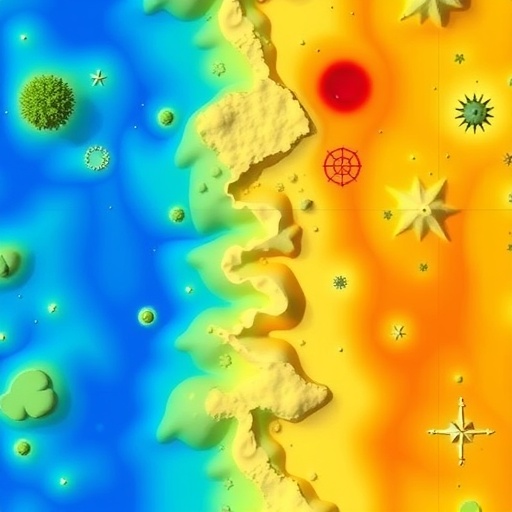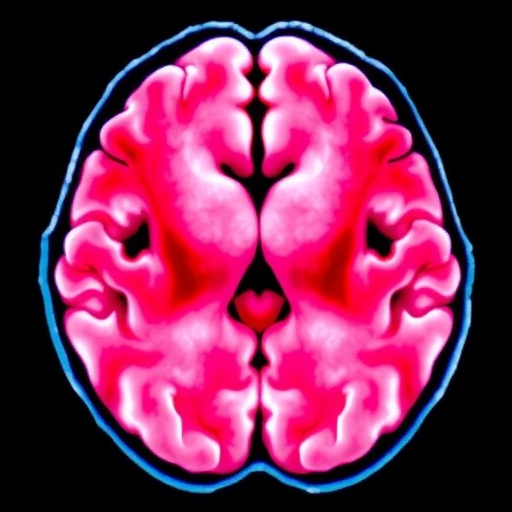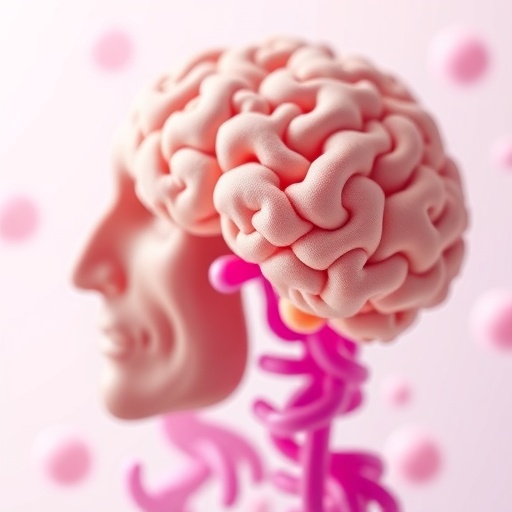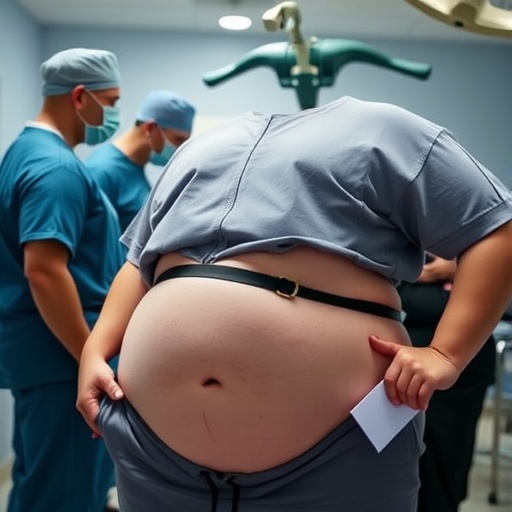PROTECT YOUR DNA WITH QUANTUM TECHNOLOGY
Orgo-Life the new way to the future Advertising by AdpathwayIn recent years, the quest for effective time series forecasting using deep learning has gained significant momentum as researchers seek to understand and predict dynamic systems. Traditionally, statistical models have been deployed to analyze and forecast time-dependent data, but they often lack the agility and adaptability required in real-time scenarios. Science and technology are now witnessing the emergence of novel approaches that blend deep learning’s power with systematic forecasting techniques, striking a balance that enables improved predictions in a variety of applications.
A pioneering team of engineers at the University of California, Santa Cruz, has introduced an innovative method for time series forecasting that integrates deep learning principles with a unique perspective: future-guided learning. This method enhances the predictive capabilities of deep learning models by utilizing information from the near future—enabling them to improve their forecasts based on data that may not be available in traditional models. Their groundbreaking work focuses specifically on predicting seizures in patients by analyzing brain wave data, with astonishing results showing up to a 44.8% enhancement in prediction accuracy compared to traditional methods.
At the heart of this research is the recognition that the world is intrinsically time series-based, comprising events and phenomena that continuously evolve. Jason Eshraghian, the assistant professor leading the study, aptly describes this dynamic landscape: “If you want AI to do something good for the world, you need to be able to handle time-varying dynamic, ever-changing information.” This philosophy underpins the need for advanced methodologies that can adapt to the complexities and variabilities of real-world scenarios.
Central to their future-guided learning technique is the interaction between two distinct deep learning models serving different predictive functions. The teacher model operates in the immediate future, allowing it to make predictions utilizing more current data, while the student model draws on historical data to forecast events further down the line. This collaboration mimics an educational framework where the teacher imparts valuable insights to the student, effectively transferring knowledge of current conditions to enhance future predictions.
In practical terms, for instance, the seizure prediction model identifies whether a seizure is occurring at any given moment, utilizing the latest brain wave measurements. Meanwhile, the student model, which is designed to anticipate seizures occurring 30 minutes later, leverages the teacher’s real-time assessments to refine its own forecasts. This intricate knowledge-sharing mechanism enables the student model to associate its inputs with the teacher’s insights, ultimately improving the accuracy of its predictions.
The implications of this technique extend well beyond the realm of healthcare. The potential for personalized medicine is particularly striking, as individual brain patterns can significantly affect seizure predictions. By continuously adapting to the unique signatures of each patient, this methodology holds promise for more tailored and effective healthcare solutions. Imagine a future where wearable technology, such as smartwatches that monitor EEG signals, harnesses this two-model approach to enhance accuracy in seizure detection and prediction automatically.
The researchers evaluated their method on several datasets, including one sourced from the Children’s Hospital Boston MIT, where they achieved a remarkable 44.8% improvement in predictive performance for seizures. Another dataset from the American Epilepsy Society further underscored the method’s effectiveness, yielding an 8.9% performance gain even when the teacher model was trained on generalized data instead of individualized patient data. This adaptability is crucial, as it suggests that the approach can still yield significant benefits in real-world applications where patient-specific data may not always be available.
Moreover, the researchers tested their model against a well-known benchmarking task, utilizing the Mackey-Glass equation, to evaluate their AI’s predictive capabilities in complex systems. Here too, future-guided learning demonstrated its prowess, showing a 23.4% improvement over baseline models in this mathematical context. These results underline not just the method’s versatility but also its potential across various fields such as finance, climate science, and industrial applications, where time series data are prevalent.
Driving this research is a profound understanding of the human brain’s remarkable efficiency in processing vast amounts of information with minimal energy expenditure. Eshraghian stresses the importance of drawing inspiration from cognitive science and theories about brain function to enhance deep learning algorithms. This biologically inspired perspective equips researchers with insights into how predictive processes operate in the brain, offering potential pathways to refine AI models further.
The essence of this ongoing research lies in recognizing the brain as an adept predictive machine, one that learns from its experiences and continuously adjusts its expectations based on incoming information. This adaptive mechanism prioritizes “surprises,” where the discrepancies between anticipated and actual results drive quicker learning and robust cognitive processing. Understanding this concept offers a unique lens through which researchers can explore the dynamic nature of time and its impact on predictive capabilities within machine learning.
As this innovative approach to time series forecasting continues to evolve, the researchers envision expanding their investigation into how the brain utilizes various timescales for computation and prediction. By exploring the intricate relationships between time and learning, they hope to gain deeper insights into the mechanisms that underpin cognition and apply this knowledge to improve AI methods further.
Looking ahead, it is clear that the intersection of time-series data, deep learning, and personalized medicine holds transformative potential. The future-guided learning model offers a glimpse into a future where AI can harness the power of information from the immediate past and the near future to make informed decisions in real time. As researchers continue to refine these approaches, the possibilities for enhancing predictive accuracy in numerous domains remain vast and exciting.
The findings of this research mark a significant step forward in the realm of time series forecasting and provide a strong foundation for ongoing exploration of its applications in healthcare and beyond. With further advancements, the combination of wearable technology and intelligent predictive modeling may soon become a hallmark of modern medical practice, significantly enhancing patient care and health outcomes across the board.
In the rapidly evolving landscape of artificial intelligence and machine learning, researchers at UC Santa Cruz are charting a course that could redefine how we engage with complex, time-varying data. By combining insights from the realms of deep learning and neurology, they are not only advancing our understanding of predictive models but also paving the way for intelligent systems that can adapt to the unpredictable nature of the world we inhabit.
As we stand on the brink of significant advancements in AI, this innovative research reminds us of the power of collaboration between various fields and the importance of drawing inspiration from nature’s designs. With each discovery, we move closer to a future where AI is better equipped to support and enrich human life, harnessing the dynamism of time as a central tenet of its operation and influence.
Subject of Research: Time series forecasting using deep learning for seizure prediction
Article Title: A predictive approach to enhance time-series forecasting
News Publication Date: 30-Sep-2025
Web References: Nature Communications
References: DOI: 10.1038/s41467-025-63786-4
Image Credits: None
Keywords
AI, time series forecasting, seizure prediction, deep learning, personalized medicine, brain waves, future-guided learning, neuromorphic computing, EEG signals, predictive modeling, healthcare technology.
Tags: brain wave data analysisdeep learning time series forecastingdynamic systems analysisfuture-guided learninghealthcare technology advancementsinnovative forecasting techniquesnovel approaches in AIpredictive capabilities enhancementreal-time predictive modelsseizure prediction accuracystatistical models vs deep learningUniversity of California Santa Cruz research


 4 hours ago
9
4 hours ago
9





















 English (US) ·
English (US) ·  French (CA) ·
French (CA) ·